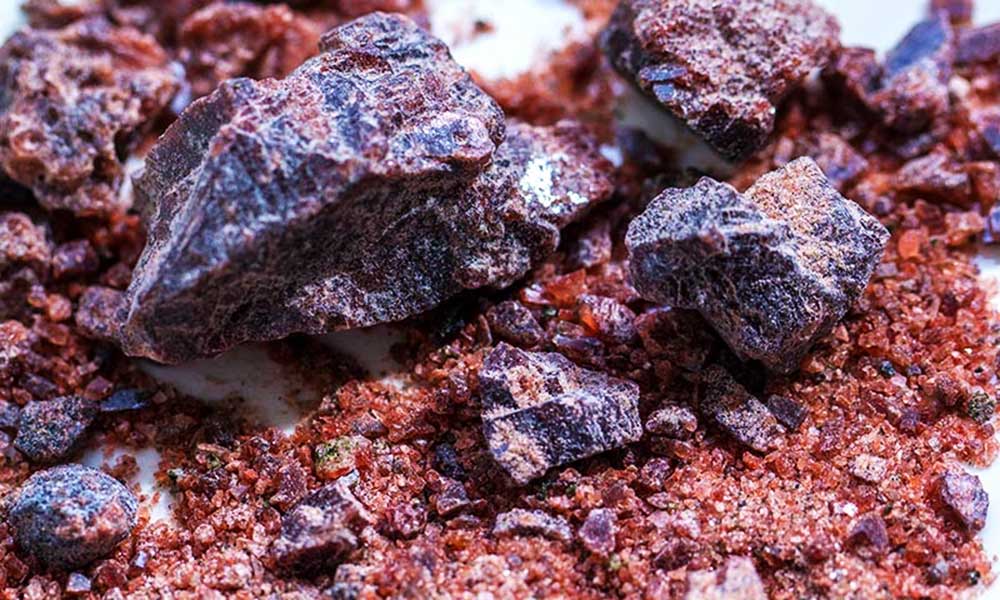
Today we tell you what is the Kala Namak salt or black salt from the Himalayas that is talked about so much and why it is so successful among those who follow a vegan diet.
Some time ago I told you about the different types of salt that we can find for culinary use. Being all of them sodium chloride, we cannot deny that using one type of salt or another can determine the final result of the dish, since not all types season in the same way.
And as in almost all areas of life, fashion is also imposed in salt and if until not long ago, the healthiest salt in the world was iodized salt of marine origin, in recent years it has had two tough competitors which are the Himalayan salt from the Himalayas , which we have already talked about, and the Kala Namak salt or black salt from the Himalayas, which has recently been all the rage among those who follow the vegan diet.
What is black salt or Kala Namak?
It is a salt that, like pink salt, has its origin in the Himalayas and is often used in Indian cuisine.
It is a salt of volcanic origin that has a color between gray and black that is often accompanied by reddish shine. But what really makes this salt so special is that, in addition to the usual sodium chloride, this black salt also contains iron and sulfur and that influences its flavor, because instead of predominating the flavor that we identify as salty, it tastes and smells very similar to boiled egg.
Kala Namak, the begra salt that triumphs among vegans
It is precisely this very particular flavor that has made it a very present ingredient in many vegan recipes, as it allows to achieve very successful results when preparing veganesas, eggless omelettes or even the preparation of dishes such as vegan deviled eggs.
Black salt or Kala Namak salts less than industrial white salt since it contains a lower amount of sodium, so it is also a healthier alternative to common salt obtained industrially in the laboratory. In addition, its characteristic egg flavor makes its use very pleasant when combined with certain foods such as fish or eggs.
Of course, when purchasing this salt we have to check the label well to make sure that the product we are buying is 100% black salt, since versions of it with added sodium are also marketed so that the salting power is similar. that of the white salt that we are used to in Europe.
The purported benefits of Himalayan black salt
In Ayurvedic medicine, which is the ancient medical system of India, black salt is present in many treatments since, due to the minerals it contains, many benefits are attributed to it. They say that it is very useful in the treatment of stomach and gastrointestinal problems and that it is suitable for people with hypertension due to its low sodium level.
It would also work as an antacid, antiflatulent, carminative -helps expel gas- or even as a fat burner. Hindu natural medicine also recommends it as a remedy for hair to grow healthier, stronger and shinier, and even to prevent or stop hair loss.
Likewise, it could have benefits for the skin and act as a natural disinfectant if used as a bath salt, relieving inflammation, helping to eliminate warts and fungi such as athlete's foot.
Now, if you want my opinion, I'll stick with what culinary has its grace and that it is an interesting product so that those who want to eat healthier and vegetables cost them have condiments that allow them to play with new flavors that they like. facilitate the consumption of foods such as fish or vegetables.